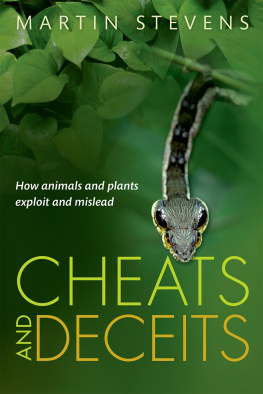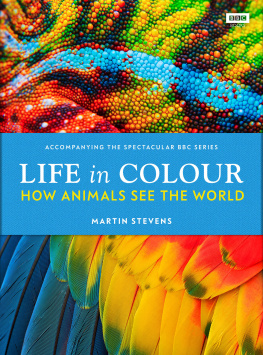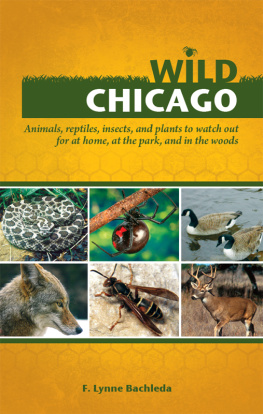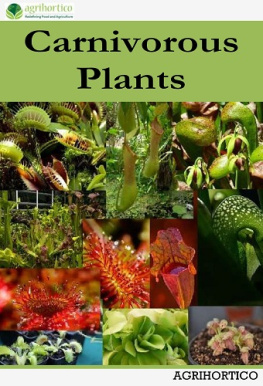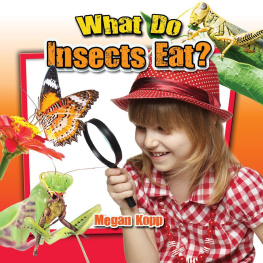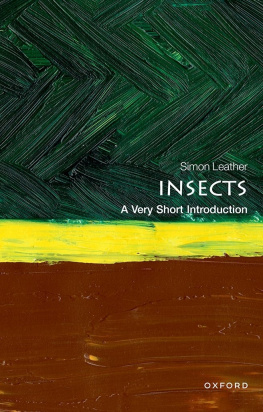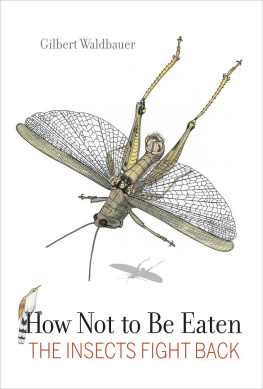Cheats and Deceits

Great Clarendon Street, Oxford, OX2 6DP, United Kingdom
Oxford University Press is a department of the University of Oxford. It furthers the University's objective of excellence in research, scholarship, and education by publishing worldwide. Oxford is a registered trade mark of Oxford University Press in the UK and in certain other countries
Martin Stevens 2016
The moral rights of the author have been asserted
First Edition published in 2016
Impression: 1
All rights reserved. No part of this publication may be reproduced, stored in a retrieval system, or transmitted, in any form or by any means, without the prior permission in writing of Oxford University Press, or as expressly permitted by law, by licence or under terms agreed with the appropriate reprographics rights organization. Enquiries concerning reproduction outside the scope of the above should be sent to the Rights Department, Oxford University Press, at the address above
You must not circulate this work in any other form and you must impose this same condition on any acquirer
Published in the United States of America by Oxford University Press 198 Madison Avenue, New York, NY 10016, United States of America
British Library Cataloguing in Publication Data
Data available
Library of Congress Control Number: 2015944361
ISBN 9780198707899
ebook ISBN 9780191017612
Printed in Great Britain by Clays Ltd, St Ives plc
Links to third party websites are provided by Oxford in good faith and for information only. Oxford disclaims any responsibility for the materials contained in any third party website referenced in this work.
For Audrey and Samuel
Preface
Most of us will have encountered one form of deception or another in the natural world. Its hard not to because deception is everywhere. It ranges from the relatively familiar sight of a caterpillar camouflaged on a tree, to the way that some orchids elaborately mimic the smell and appearance of female insects. But whats often less well appreciated is the intricacy, extent, and sometimes the extremity of deceit and manipulation used by animals, plants, and even fungi. This is perhaps partly because deception often occurs in many habitats that we are somewhat less familiar with (such as the deep sea or tropical rainforests), and because it frequently occurs in sensory modalities that we are less well attuned to (such as ultraviolet light or ultrasonic sounds). In short, the more we look for deception and trickery in nature, the more we find it. I have spent most of my career working on various aspects of deception, from camouflage in crabs through to mimicry by cuckoos, and the extent that organisms go to in order to manipulate one another still astounds me. In some regards it shouldnt, because biologists have long appreciated that being successful, in evolutionary terms, is about passing on your genes to the next generation, and if that means tricking and exploiting others to do so, then so be it. It is, however, the sophisticated adaptations and intricacy involved in many forms of deception, and the number of forms of deception that exist in nature, that never ceases to amaze me.
This book is about what we know regarding deception in nature (and what we dont). It is about the types of deception that exist, how they work, and the historical context and significance that deception has had, and continues to have, in understanding evolution and adaptation. It is also very much about the modern scientific work that has sought to investigate and understand deception across a wide range of organisms. Each chapter discusses one or two main types or functions of deception broadly covering three main areas: obtaining food, avoiding being eaten, and reproduction. Without wishing to give too much away, then brings things back together to highlight some of the key areas and concepts of deception, and looks forwards to what we still need to understand and discover.
There are several processes that are thought by scientists to drive the evolution of deception in nature. Defining key concepts in a subject like this is important if we are to be clear about where different processes occur, and how the type of deception discussed actually works and evolves. However, while important, there is a risk that formal definitions can become overly dry, and I did not want to interrupt the story of how different types of deception work too much by introducing semantics from the outset. Instead, I have tried to find a balance between discussing the varied types and examples of deception and how they work without being too formal, while still outlining what the key concepts are. Beyond the brief description that follows here, I have generally introduced key terms, including when they may occur in nature, where they are first relevant in the book, rather than adopting a more formal set of definitions and concepts from the very outset in . Of these, perhaps the most familiar type of deception is mimicry. Here, an individual resembles another species in some way, such that it can deceive others into considering it as the wrong object type. For example, some species of harmless snake match the banding colours of venomous species to avoid predatorssomething called Batesian mimicry. Conversely, aggressive mimicry occurs when mimicry is used in an antagonistic way. For example, some insects resemble the colour and shape of flowers to avoid being recognized and avoided by their prey, which frequently visit real flowers. Camouflage is also a widespread and intuitive idea (though much more complex and intriguing than generally realized). Frequently, camouflage involves matching the appearance of the environment, or some specific object in it (such as a dead leaf), so that a predator (or prey item) fails to detect or recognize it. There is one other key concept worth highlighting here too: sensory exploitation. This occurs when an individual produces a communication signal that has evolved to be highly effective in stimulating the sensory system of another animal (of the same or another species). In doing so, the individual making the signal can elicit a greater behavioural response from its target than might otherwise have been the case. For example, some frogs produce mating calls that have evolved specific sound properties that strongly stimulate the hearing sensitivity of females, and in doing so increase their chances of mating. Sensory exploitation seems to be a common way that deception arises and works in nature.
In principle, this book could have been organized by another set of ideas or subjects, and we should not think of the topic(s) of each chapter and the notions discussed as isolated from one another. On the contrary, I have tried throughout to indicate common concepts and theories and attempt to link them together. Nonetheless, the main themes of each chapter seemed to be the most logical way to organize things; being the broad types of deception that exist and what ultimately they achieve. It should also be said that the comparative length of certain chapters and extent of the ideas discussed does not mean that some areas are more or less important than others. Instead, they reflect the relative popularity (past and present) of work testing these areas, and no doubt some lack of knowledge on my part too. The same point goes for the taxonomic spread of the examples discussed, although whether deception is more common in some groups of organism is an interesting question (and one discussed in ). Finally, a book like this is not designed to cover all known examples of deception. Its more about our fundamental understanding of the subject area and the scientific experiments designed to test those ideas. The examples chosen are those that I personally felt were most interesting and helpful in highlighting key concepts and the work undertaken to test them. In some cases, I could have chosen different examples.

